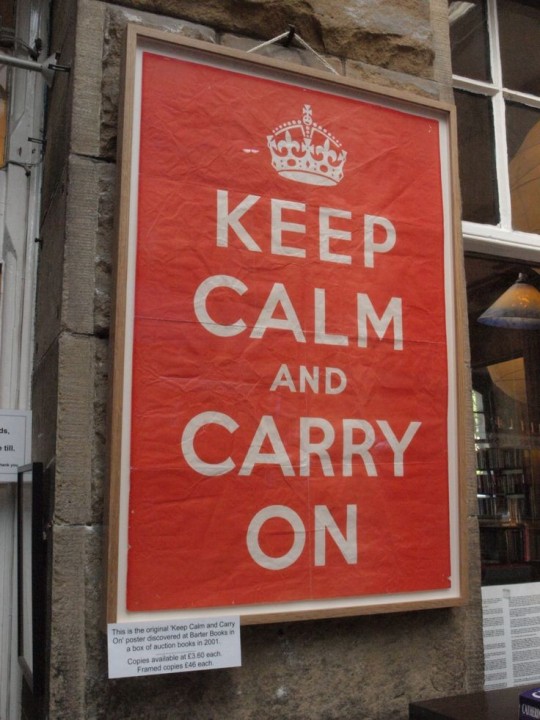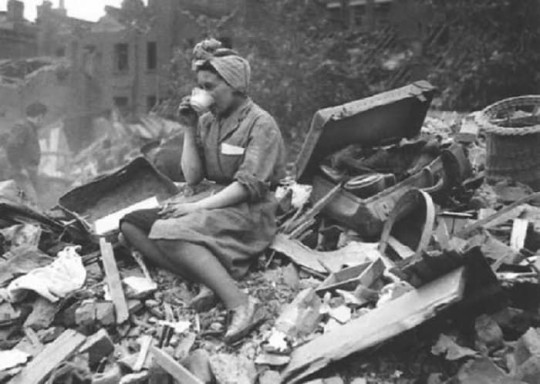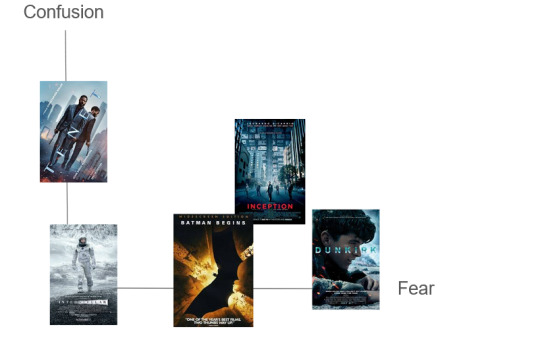#from Dunkirk
Explore tagged Tumblr posts
Text
I do recommend going to small museums as they always have the coolest and weirdest shit
#example one: RNLI Poole Lifeboat museum has a 1939 lifeboat that helped in the Dunkirk evacuation and has the history from 1882 to 2021#example two: Milton Keynes museum that has rooms that recreate victorian life and has a full museums on development of telephones#I just love museams
2K notes
·
View notes
Text
I only watched like two thirds of Oppenheimer and like it's a beautiful movie and well made and well acted and well directed but also. I DNF'ed it. like it's a technical marvel but it isn't like. interesting enough? like it isn't as amazingly good as I expected after hearing people talk so much about it. lowkey wonder if reviewers aren't a little bit blinded by the star studded cast
#like you can just say anything cillian murphy touches lowkey slaps. that much is true#you can even say you're a cnolan bootlicker (me too)#but it's simply not as compelling as everyone made it seem. I think it's that it's not... personable???#nolan's greatest strength imo is that he directs these movies with some sort of relationship at the core#usually a fairly obsessional relationship too. sometimes a healthy one (tenet) sometimes not (the prestige)#sometimes familial (interstellar and inception) sometimes not (the two boys in dunkirk)#and this one... didn't have that emotional center. it's about a man who very effectively and not entirely intentionally#completely alienated himself from the world both through his practical choices and through his mode of thought#and I don't know anything about the irl man himself but I'm guessing that's pretty damn accurate#but it leaves the movie grasping at something that isn't there because it HAS the brilliant visuals it has the sweeping complexity#but it doesn't have the emotional and relational core that is why I love cnolan's movies#does that make sense?#Lu rambles#anyway I will be sat for his odyssey thing though#oppenheimer
19 notes
·
View notes
Text






x
#harry styles#stylesedits#1dsource#hlcreators#hlsource#tracksintheam#trackinghome#hs1 nostalgia continues and here we have harry never taking his Dunkirk promo interviews seriously fgfhfdfdgfh#i will be making more gifs from this time#hazza#.gifs#mine#my edit#dunkirk promo
116 notes
·
View notes
Text
Apparently Americans don't get told about The Blitz in their history classes, which is wild to me. I can understand having it in less detail obviously, but not even mentioned? Insane. I need to know more.
I'll leave some basic info about The Blitz underneath the cut just in case you're curious ig
The Blitz was, put simply, a very aggressive bombing campaign sent out against Britain that lasted just over 8 months. During the campaign, the Germans specifically targeted civilians in large cities, most famously London (although they also attacked a lot of other UK cities, including in Wales and Scotland).
The attacks were very frequent to the point that we still find bombs that failed to detonate to this day.
The German air force (Luftwaffe) was against the Royal Air Force (RAF), and the RAF was notably smaller in comparison-- the thing that made the RAF so lethal was its superior radar technology, better planes, and more focused strategy. Britain also had a LOT of support from its commonwealth and volunteers from other countries, including Canada, India, Poland, Australia, and many more (America included).
Since the attacks were being sent out on civilians, there was widespread fear, and a lot of children had already been separated from their families and evacuated to the countryside.
Through all of this, possibly the most notable and commendable part of The Blitz was the spirit of the British population themselves. Not to sound biased. British people continued to push their good humour upon the situation and were determined to continue living their lives as normally as possible, with entertainment and work still being open despite the very obvious carnage around them. A little fact I recently learnt was that the "Keep Calm and Carry On" poster also originated from The Blitz as propaganda to boost morale.




As my own personal anecdote, my great grandmother gave birth while the hospital she was in was being bombed (she was fine). This is to say that while images of The Blitz as a symbol of determination and resilience are true, in a lot of cases, there was also still a lot of terror, unrest, crime, and insufficient shelter that caused a lot of death. They just didn't want Germans or other British civilians to see that morale might be decreasing, as it would put pressure on them to surrender.
This all occurred before America formally joined the war effort. In short: when British people get pissed off with Americans for saying that "if it wasn't for us, you'd all be speaking German", this is why.
If you're interested in learning more about it, there's loads of excellent movies and documentaries that go over The Blitz in more detail. I also recommend checking out Know Your Ally: Britain, because it goes over a lot of the other stuff about Britain's war efforts from an American perspective and also goes into more detail about some of the stuff I've mentioned.
#pls share this around I want to know from as many ppl as possible#im so shocked that it isnt brought up in classes because its a massive deal here#i asked one of my american friends and they said theyd never heard of it#im also curious about dunkirk too#they said theyd heard of that one which is good#sorry if any of my information is off in this post lmk :p#if americans only learn about pearl harbour onwards i will be so confused lmao#also if anyone got their own personal additions or anecdotes or facts about the blitz tell meee i like knowing stuffff#tumblr polls#wwii#america
7 notes
·
View notes
Text
I love when people come up with hyperspecific AUs
#someone I follow is brainstorming a Fleabag AU for a TV show from the 1960s#I haven't seen either show but I love the creativity#I also have a couple of vague ideas for a Dunkirk (2017) It's a Wonderful Life AU
8 notes
·
View notes
Note
saw your post abt the xhs demons in passing while scrolling tumblr and i laughed at the reply to "nobody care you"
no bc my face went from 😲 -> 😐 -> 😠 -> 🤣 -> 🥴 -> 😭
while reading these comments bc PLS everyone is so funny and ot6 are just so dumb and stupid it’s even funnier. like i love laughing at how delusional they are cause wdym
“your boyfriend” “but this girl is not you” HES NOT???!!?? IM NOT DELUSIONAL LIKE THAT????? NOBODY OT7 THINKS THAT WAY except for you mfers.
#chat i hate it when kpop stan’s are like serious delulu#like cmon im just like 🥴🥴🥴 🤪🤪 delulu#not really 😍😍😍 delulu yknow what i mean#like if chenle or winwin got a gf like good for them#not gonna stop supporting them or boycott the whole ass group like cmon#we obsess over celebrity relationships in hollywood like#omg sabrina carpenter is dating the guy from eternals and dunkirk !!! so cool !!!#❓: asks#anon
2 notes
·
View notes
Text
'The key word in Christopher Nolan’s “Oppenheimer” is “compartmentalization.” It’s a security strategy, introduced and repeatedly enforced by Col. Leslie R. Groves (Matt Damon) in his capacity as director of the Manhattan Project, which is racing to build a weapon mighty enough to bring World War II to an end. In Groves’ mind, keeping his various teams walled off from one another will help ensure the strictest secrecy. But J. Robert Oppenheimer (Cillian Murphy), the brilliant theoretical physicist he’s hired to run the project laboratory in Los Alamos, N.M., knows that compartmentalization has its limits. The success of their mission will hinge not on isolation but on an extraordinary collaborative synthesis — of physics and chemistry, theory and practice, science and the military, the professional and the personal.
In the weeks since “Oppenheimer” opened to much critical acclaim and commercial success, Groves’ key word has taken on an unsettling new meaning. Compartmentalization, after all, is a pretty good synonym for rationalization, the act of setting aside, or even tucking away, whatever we find morally troubling. And for its toughest critics, many of them interviewed for a recent Times piece by Emily Zemler, “Oppenheimer” compartmentalizes to an outrageous degree: In not depicting the atomic bombings of Hiroshima and Nagasaki, they argue, the movie submits to a historical blindness that it risks passing on to its audience. Nolan, known for crafting fastidiously well-organized narratives in which nothing appears by accident, has been taken to task for what he chooses not to show.
Most of those decisions, of course, flow directly from his source material, “American Prometheus,” Kai Bird and Martin J. Sherwin’s authoritative 2005 Oppenheimer biography. With the exception of one key narrative thread, everything onscreen is framed, per biopic convention, through its subject’s eyes. And so you see Oppenheimer as an excitable young physics student, and you behold his eerie, captivating visions of the subatomic world. You see him become one of America’s leading physicists, take a major role in the secret race to the A-bomb and, together with his recruits, devise and build the world’s first nuclear weapons. You see his shock and awe when the Trinity test proves successful, lighting up the desert sky and landscape with a blinding flash of white and a 40,000-foot pillar of fire and smoke.
What you don’t see — because Oppenheimer doesn’t see them either — are the bomb’s first victims: the thousands of New Mexicans, most of them Native American and Hispanic, who dwell within a 50-mile radius of the Trinity test site and whose exposure to radiation will have deadly health consequences for generations. You don’t see the bombs being dropped on Hiroshima and Nagasaki; you don’t see the lethal conflagrations and ash-covered rubble, and you don’t see the bodies of Japanese victims burned beyond recognition, or hear the screams and wails of survivors. (Estimates place the eventual death toll at close to 200,000.)
In refusing to visualize these horrors, is Nolan showing admirable dramatic restraint or committing unforgivable sins of omission? Is he merely sticking to his subject’s perspective or conveniently dodging the kind of imagery that would trouble Oppenheimer’s conscience?
As it happens, the scientist does in fact see that imagery, and his conscience is duly troubled. In one key scene, the camera studies Oppenheimer and his colleagues as they watch disturbing footage of the bombings’ aftermath. An offscreen speaker describes how thousands of Japanese civilians were incinerated in an instant, while thousands more died excruciating deaths from radiation poisoning. You see Oppenheimer recoil, even if what he recoils from is left pointedly out of frame.
These are not the only images of WWII that the movie withholds. It’s a measure of the formal and structural rigor of “Oppenheimer” that we see nothing of the Pacific theater conflict, and nothing of the European theater conflict, either — not even when Oppenheimer fears that the Nazis might be building a nuclear weapon of their own. Nolan, who always trusts us to keep up with his elaborately constructed puzzle-box narratives, also trusts us to know a thing or two about history. And crucially, he wants to open up a different perspective on the war, to show how some of its most crucial tactics and maneuvers played out not on battlefields but in classrooms and laboratories — and, finally, in the theater of Oppenheimer’s mind.
We are sometimes told, in matters of art and storytelling, that depiction is not endorsement; we are not reminded nearly as often that omission is not erasure.
It’s a brilliant mind, to say the least. It’s also ill prepared for the terrifying, world-altering reality that it ushers into being. Oppenheimer may see footage of Hiroshima and Nagasaki, but images are a poor substitute for reality; he will never walk among the ruins, witness the despair of the survivors or behold the devastation up close. Nolan knows that we can’t either. What’s more, he clearly believes that we shouldn’t be able to.
Seen in this light, the director’s refusal to thrust his camera onto Japanese soil, far from being an act of historical vagueness or obliviousness, instead represents a carefully thought-out, rigorously executed solution to the problem of how to represent history. And his solution speaks not to his insensitivity but his integrity, his refusal to exploit or trivialize Japanese suffering by re-enacting it for the camera. Nolan lays the groundwork in one of his most revealing scenes, shortly before the decision is made to target Hiroshima and Nagasaki. As Oppenheimer looks on, U.S. Secretary of War Henry L. Stimson (James Remar) removes Kyoto from the list of potential targets, citing the city’s cultural and historical significance and fondly recalling that he and his wife honeymooned there years earlier.
Before the bombings have even taken place, Nolan, in this one scene, indicts the arbitrary callousness of a U.S. war machine that cloaks its destructive intentions in cultural high-mindedness and rank sentimentality. It’s an appalling moment, and Stimson unambiguously solicits Oppenheimer’s contempt as well as the viewer’s; watch that scene in a packed house and you’ll hear the audience scoff as one. You might also begin to suspect, if you haven’t already, that Nolan isn’t going to dramatize the bombings in straightforward fashion, if he means to dramatize them at all.
Nolan has never been turned on by spectacles of violence. Even “Dunkirk,” a harrowing if ultimately optimistic World War II bookend of sorts to “Oppenheimer’s” apocalyptic despair, is a combat picture far more driven by ideas than by carnage. Violence certainly plays its part in Nolan’s movies, but seldom is it an end in itself. Reviewing “Oppenheimer” in the New York Times, Manohla Dargis noted, “There are no documentary images of the dead or panoramas of cities in ashes, decisions that read as [Nolan’s] ethical absolutes.” And in a recent Decider essay, the critic Glenn Kenny shrewdly examined “Oppenheimer” alongside Alain Resnais’ elliptical 1959 masterpiece, “Hiroshima Mon Amour,” itself a powerful commentary on the futility of trying to represent the unrepresentable. “Had Nolan chosen to somehow ‘recreate’ the bombing of Hiroshima,” Kenny writes, “we, the viewers, would really see nothing.”
Japanese filmmakers, of course, have been powerfully evoking and re-creating the bombings for decades: Kaneto Shindo’s “Children of Hiroshima” (1952) and especially Shohei Imamura’s devastating “Black Rain” (1989) are just two well-known examples. Over the past few weeks, social media users have circulated clips of Mori Masaki’s 1983 anime “Barefoot Gen,” an adaptation of Keiji Nakazawa’s manga series of the same title. It contains what is surely one of the cinema’s most upsetting, unsparingly graphic depictions of the atomic blast and its casualties. It’s one of several animated films, including Renzo and Sayoko Kinoshita’s 1978 short “Pica-don” and Sunao Katabuchi’s “In This Corner of the World” (2016), that have confronted the destruction of Hiroshima and Nagasaki with a boldness and artistry that live-action cinema can be hard-pressed to match.
Much of this evidence has been marshaled in Nolan’s defense: Surely this is Japan’s story to tell, not his. I’m reluctant to embrace that particular stay-in-your-lane logic, which is ultimately deadening to the cause of art and empathy. As Clint Eastwood demonstrated in “Letters From Iwo Jima,” it is not beyond a white Hollywood filmmaker’s ability to enter persuasively and movingly into the mindset of a wartime enemy. Even so, that clearly isn’t the story Nolan is telling. And with such a wealth and variety of Japanese fiction and nonfiction filmmaking on the atomic bombings already, why should “Oppenheimer” bear the responsibility of representing events and experiences that fall outside its subject’s perspective?
Some would rebut that “Oppenheimer,” being a Hollywood blockbuster with serious global reach (whether it will play Japanese theaters remains uncertain), will be many audiences’ only exposure to the events in question and thus might “create a limit on public consciousness and concern,” as the poet, writer and professor Brandon Shimoda told The Times. A corollary of this argument: The crimes committed against the people of Hiroshima and Nagasaki were so unspeakable, so outsized in their impact, that Oppenheimer’s perspective does and should dwindle into insignificance by comparison. For Nolan to focus so exclusively on an American physicist’s story, some insist, ultimately diminishes history and humanity, even as it reinforces the Hollywood hegemony of the great-man biopic and of white men’s narratives in general.
I get those complaints. I also think they betray an inherent disrespect for the audience’s intelligence and curiosity, as well as a fundamental misunderstanding of how movies operate. It’s telling that few of these criticisms of perspective were leveled at “American Prometheus” when it was published in 2005, that no one begrudged Bird and Sherwin for offering a meticulously researched, morally ambivalent portrait of their subject’s life and consigning the destruction of two Japanese cities to a few pages. That’s because books are books, the argument goes, and movies are movies — and this perceived difference, it must be said, reveals a pernicious double standard.
Because they seldom achieve the narrative penetration and richness of detail of, say, a 700-page biography, movies, especially those about history, often are hailed as achievements of breadth over depth, emotion over intellect. They are assumed to be fundamentally shallow experiences, distillations of real life rather than sharply angled explorations of it, propelled by broad brushstrokes and easy expository shortcuts, and beholden to the audience’s presumably voracious appetite for thrilling, traumatizing spectacle. And because movies offer a visual immediacy and narrative immersion that books don’t, they are expected to be sweeping if not omniscient in their narrative scope, to reach for a comprehensive, even definitive vantage.
Movies that attempt something different, that recognize that less can indeed be more, are thus easily taken to task. “It’s so subjective!” and “It omits a crucial P.O.V.!” are assumed to be substantive criticisms rather than essentially value-neutral statements. We are sometimes told, in matters of art and storytelling, that depiction is not endorsement; we are not reminded nearly as often that omission is not erasure. But because viewers of course cannot be trusted to know any history or muster any empathy on their own — and if anything unites those who criticize “Oppenheimer” on representational grounds, it’s their reflexive assumption of the audience’s stupidity — anything that isn’t explicitly shown onscreen is denigrated as a dodge or an oversight, rather than a carefully considered decision.
A film like “Oppenheimer” offers a welcome challenge to these assumptions. Like nearly all Nolan’s movies, from “Memento” to “Dunkirk,” it’s a crafty exercise in radical subjectivity and narrative misdirection, in which the most significant subjects — lost memories, lost time, lost loves — often are invisible and all the more powerful for it. We can certainly imagine a version of “Oppenheimer” that tossed in a few startling but desultory minutes of Japanese destruction footage. Such a version might have flirted with kitsch, but it might well have satisfied the representational completists in the audience. It also would have reduced Hiroshima and Nagasaki to a piddling afterthought; Nolan treats them instead as a profound absence, an indictment by silence.
That’s true even in one of the movie’s most powerful and contested sequences. Not long after news of Hiroshima’s destruction arrives, Oppenheimer gives a would-be-triumphant speech to a euphoric Los Alamos crowd, only for his words to turn to dust in his mouth. For a moment, Nolan abandons realism altogether — but not, crucially, Oppenheimer’s perspective — to embrace a hallucinatory horror-movie expressionism. A piercing scream erupts in the crowd; a woman’s face crumples and flutters, like a paper mask about to disintegrate. The crowd is there and then suddenly, with much sonic rumbling, image blurring and an obliterating flash of white light, it is not.
For “Oppenheimer’s” detractors, this sequence constitutes its most grievous act of erasure: Even in the movie’s one evocation of nuclear disaster, the true victims have been obscured and whitewashed. The absence of Japanese faces and bodies in these visions is indeed striking. It’s also consistent with Nolan’s strict representational parameters, and it produces a tension, even a contradiction, that the movie wants us to recognize and wrestle with. Is Oppenheimer trying (and failing) to imagine the hundreds of thousands of Japanese civilians murdered by the weapon he devised? Or is he envisioning some hypothetical doomsday scenario still to come?
I think the answer is a blur of both, and also something more: In this moment, one of the movie’s most abstract, Nolan advances a longer view of his protagonist’s history and his future. Oppenheimer’s blindness to Japanese victims and survivors foreshadows his own stubborn inability to confront the consequences of his actions in years to come. He will speak out against nuclear weaponry, but he will never apologize for the atomic bombings of Japan — not even when he visits Tokyo and Osaka in 1960 and is questioned by a reporter about his perspective now. “I do not think coming to Japan changed my sense of anguish about my part in this whole piece of history,” he will respond. “Nor has it fully made me regret my responsibility for the technical success of the enterprise.”
Talk about compartmentalization. That episode, by the way, doesn’t find its way into “Oppenheimer,” which knows better than to offer itself up as the last word on anything. To the end, Nolan trusts us to seek out and think about history for ourselves. If we elect not to, that’s on us.'
#Christopher Nolan#Oppenheimer#Leslie Groves#Matt Damon#Cillian Murphy#Los Alamos#The Manhattan Project#Hiroshima#Nagasaki#American Prometheus#Kai Bird#Martin J. Sherwin#Hiroshima Mon Amour#Dunkirk#Letters from Iwo Jima#Clint Eastwood
22 notes
·
View notes
Text
‘where you might recognize this cast member from’ and its the tiniest most insignificant cameo background character youve ever seen
2 notes
·
View notes
Text
torn between the urge to gatekeep tgc and the desire to see him in more projects... people fancasting him as young haymitch please be careful what you wish for
#with great white boy of the month privileges comes great responsibility#like yeah i'd eat up the content but there's something so charming abt him having like 3 medium roles#and by 3 i mean white haired kendall roy puppy dog eyes boy from roman empire show and british man in knit sweater on boat in dunkirk#tgc#call a man babygirl enough and all of a sudden there's ppl on tiktok saying he can pass as a teenager#christoper nolan please call him up that's all
4 notes
·
View notes
Text
-
#@ harry acting anon: not answering for reasons djdkdk#but i get you i think my issue is that it’s very difficult for me to see him transform into his character onscreen#i just see harry styles doing a bit#which isn’t great#there were moments in my policeman where he convinced me that he was his character which i loved#but for the most part especially with dwd he was just. harry styles to me#but i also think a lot of it falls onto#the director and their direction as well#olivia did a piss poor job at it#and i liked my policeman and you can tell there was much better direction#but he still had a hard time fully blending in#whereas in dunkirk i never saw harry styles™️#and i think that's interesting#because of who the director was and the type of environment that is created on sets of big films such as dunkirk#harry most DEFINITELY benefits a lot from direction but also. i agree he should seek out more training and coaching if he wants to continue#working as an actor
13 notes
·
View notes
Text

fighter planes are sentient beings to me
#that scene from dunkirk where the plane burns#dunkirk#tom hardy#christopher nolan#spitfire#fighter plane#4:00 a.m.#watercolour
5 notes
·
View notes
Text
sad we never got a tom and jack interview from either dunkirk or capone
#there was such an opportunity#esp dunkirk like why did they not interview the pilots together :(#random thoughts from my morning
3 notes
·
View notes
Text
.
#Taylor is attending an event in London right now#a thing for charity woth poetry and music#Witt mark rylance from Dunkirk
1 note
·
View note
Text
me when people use this to tag male fictional characters and it isn't even hot ones

he's so pretty I wanna put my tits in his face
#tom glynn carney was hotter in Dunkirk then in that dragon show and its not just cause i love dunkirk#like no anakin?? no ichigo from bleach??? no doctor who or dean from supernatural??#like at least make the man HOT#anyway post about Josh Washington and Mike Monroe now argue with wall is my post
13K notes
·
View notes
Text
Imagine having been born in 1905... And all your life it doesn't fucking stop. The Great War, the Spanish Flu, and then you go out of your mind for 7 years. Everyone is traumatised and nothing matters. Then another crash. And then the rise of fascism, and the War to end all Wars didn't and it's 1945 and you're just about still there. You may have fought or ferried the boys from Dunkirk or sabotaged the Nazi occupiers or worked in the factories and put out fires during the Blitz and you're lucky to be alive, because not all your friends made it. But you are and finally, fucking finally, it stops. It stops. You are tough as nails and you can put that strength to work into building something and you do, and people have cars and can buy icecream and you have a pension fund and the kids have money of their own and no nightmares.
I want that for us. I so want that for us. I want to be the generation that has seen fucking everything and is like a MRSA bug and unfazed and when that Cheeto finally dies, I want us to. Plant the gardens and clean the seas because we can and we want to and we remember some joy, some time of trust even when it got broken and we can say to the 20 somethings "let us show you what we can build, how it can feel."
And maybe Gen beta will take it all for granted like the boomers did, but we can give Gen Z and Alpha some peace because we, and Gen Z and Alpha have seen the Dark Times and fuck that noise.
29K notes
·
View notes
Text
Making a chart of Nolan movies I've watched

Finally watched Inception. Inspiration struck.
Yes, Tenet is highest on the confusion axis, but I did understand most of it.
I did like all these movies, and I wish I could have put Oppenheimer on here, but I was planning to go see that with my dad, and so that plan got dropped like a hot potato once we found out it was rated R for sex scenes. Did not particularly feel like sitting through that in a theater with my dad. Or anyone, but especially my dad. I'm fairly certain it would have been between Batman Begins and Dunkirk, but lower than Inception.
#speaking of potatoes yes that is what I took this screenshot on#one day I'll do an update of this with the other batman films and oppenheimer#maybe a couple others#but not the odyssey#chatters from the nightsky#'meredith you saw batman begins two years ago why haven't you watched the others'#because I'm scared of the joker that's why#tenet#interstellar#batman begins#dunkirk#inception
1 note
·
View note